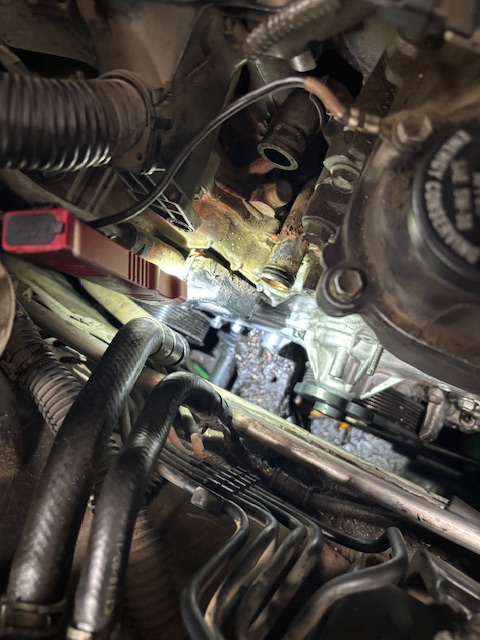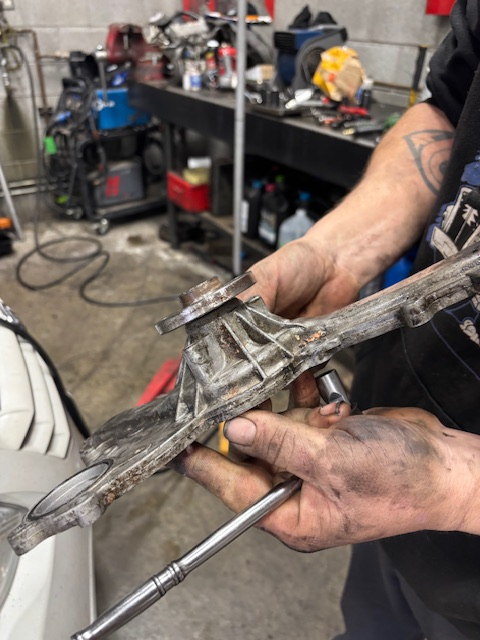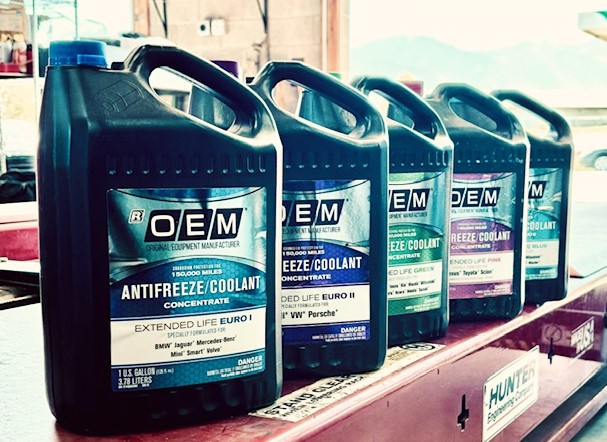What Does the Water Pump Do?
The water pump is a crucial part of your vehicle’s cooling system, it’s hard to find a car without one. This week, we replaced the water pump on a 2005 Toyota Avalon, which got us thinking: What exactly does the water pump do, and how common are failures?
The pump circulates coolant (antifreeze) through the engine block, absorbs heat, then sends that hot coolant to the radiator where it’s cooled and recirculated. If the pump fails or leaks, coolant may not circulate properly, leading to engine overheating. Today, we’ll dive into common Toyota water pump issues, though these problems can occur on all makes and models.

Why Does a Toyota’s Water Pump Leak?
There are several common causes of water-pump leaks. Here are the main ones:
1. Seal and Gasket Wear or Failure
Over time, the shaft seal (which surrounds the impeller shaft) or the mounting gasket can wear out, become brittle, crack, or become damaged—allowing coolant to escape.
2. Bearing Failure and Internal Wear
The impeller or internal bearing can degrade with age or contamination. When the bearing wears out, the shaft can shift, causing the seal to fail and coolant to leak.
3. Improper Installation or Poor-Quality Parts
If a replacement pump, gasket, or bolts aren’t installed to specification—or if low-quality parts are used—leakage becomes far more likely.
4. Coolant Contamination or Corrosion
Old, dirty, or improperly mixed coolant can accelerate corrosion inside the pump. This corrosion can lead to external leaks or internal coolant bypass issues.
5. Toyota-Specific Tendencies
- Some Toyota models (such as the Tacoma or Corolla) commonly experience shaft-seal leakage as an early sign of pump failure.
- “Weep hole” leakage—a small indicator hole designed to reveal seal failure—is also frequently observed.

Symptoms of a Leaking Water Pump
Recognizing the signs early can help prevent major engine damage:
- Coolant leaks: Puddles, drips, or colored residue under the front of the car or on the front of the engine. Dried coolant often leaves a white or pink crust.
- Dropping coolant level: Needing to top off coolant frequently without signs of a hose leak may point to a water-pump issue.
- Overheating engine: Poor coolant circulation can cause the engine to overheat, potentially leading to serious issues like a blown head gasket or warped cylinder head.
- Noise from the front of the engine: Whining, squealing, or grinding sounds—especially in belt-driven systems—may indicate bearing failure.
- Visible corrosion or dampness: Toyota owners often spot moisture or a pinkish crust around the water-pump area or weep hole.
Why You Shouldn’t Ignore It
A leaking water pump might seem minor, but the consequences can escalate quickly:
- Persistent leaks compromise the cooling system, which can lead to overheating and expensive repairs (such as head-gasket or engine damage).
- Coolant leaks can affect belts, pulleys, electrical components, and other nearby systems.
- On models with timing-belt-driven pumps, failure may require additional repairs, including timing belt replacement.
- A fully failed pump can leave you stranded.
What to Do if You Suspect a Water Pump Leak
When bringing your vehicle to a shop, it helps the technician if you can share details such as:
- Which side of the vehicle did you notice coolant dripping from
- How often you’ve needed to top off coolant
- Whether the vehicle has overheated, how long it overheated, and if the temperature gauge reached the red zone
In some cases, the water pump may be salvageable with a gasket replacement, but the safest and most reliable approach is usually full pump replacement using OEM or high-quality aftermarket parts.
When replacing the water pump, the shop may also recommend replacing:
- The thermostat
- The serpentine belt or timing belt (if applicable)
- Hoses and clamps (depending on condition and accessibility)
New coolant is always recommended, especially if water is used for topping off.

A leaking water pump in your Toyota is not something to overlook. While early signs may seem minor, the underlying issues—coolant loss, poor circulation, or internal wear—can quickly worsen. By diagnosing the problem early, making timely repairs, and using quality parts, you can prevent major engine damage and keep your Toyota running smoothly for many miles to come.
References
- “What Causes Your Toyota’s Water Pump to Malfunction?” – Bruce Cox Imports. Bruce Cox Imports
- “Symptoms & Signs of a Bad Water Pump” – AutoZone. AutoZone.com
- “Common Water Pump Problems for the Toyota Corolla” – GMB blog. GMB North America, Inc.
- “Common Water Pump Problems for the Toyota Tacoma” – GMB blog. GMB North America, Inc.
- “Water Pump Leak After Replacement? Expert …” – JustAnswer. JustAnswer
- Forum discussion: weep hole leakage, Toyota Tundra. Toyota Tundra Forum